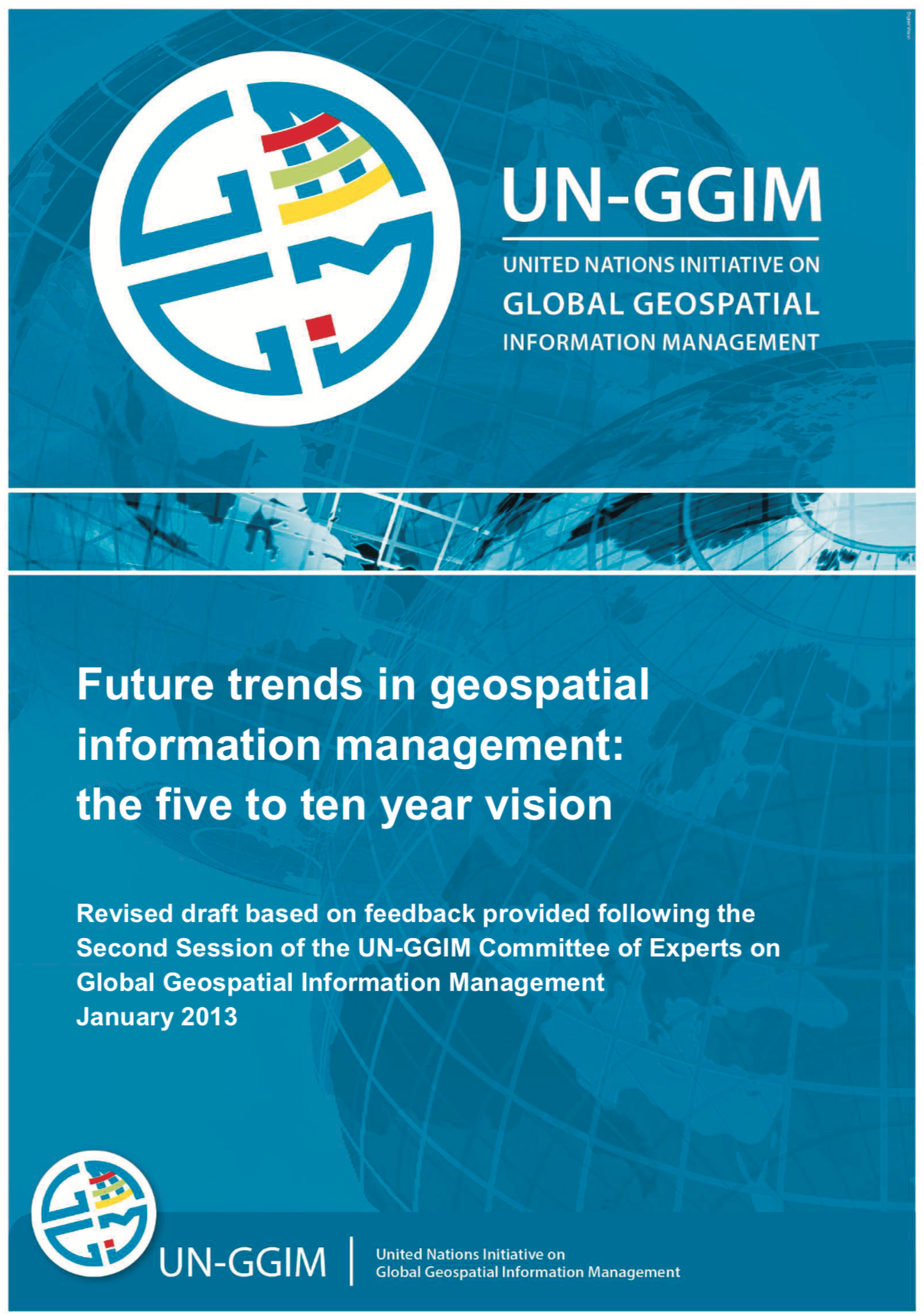The use of geospatial information is increasing rapidly. There is a growing recognition amongst both governments and the private sector that an understanding of location and place is a vital component of effective decision-making. Citizens with no recognised expertise in geospatial information, and who are unlikely to even be familiar with the term, are also increasingly using and interacting with geospatial information; indeed in some cases, they are contributing to its collection – often in an involuntary way.
A number of important technology-driven trends are likely to have a major impact in the coming years, creating previously unimaginable amounts of location-referenced information and questioning our very understanding of what constitutes geospatial information. These developments offer significant opportunities but also present challenges, both in terms of policy and in terms of the law. Meeting these challenges and ensuring that the potential benefits can be realised by all countries will be important in ensuring that the full value of geospatial information can be maximised in the coming five to ten years.
It is recognised that different countries are at very different stages in terms of the development, sophistication and use of their geospatial information infrastructures. There is a risk, inevitably, that not all countries will be in a position to invest in and realise the full potential of geospatial information, for governments, businesses and citizens. International institutions such as the UN have an increasingly important role in helping to minimise this risk, communicating the value and importance of investing in and developing a solid geospatial information base and reducing the prospect of any ‘digital divide’ emerging.
Ensuring that the full value of geospatial information is realised in the coming years will also rely on having the necessary training mechanisms in place. New and changing skills will be required to manage the increasing amount of geospatial information that is likely to be created and to ensure that the maximum value is secured from it.
The number of actors involved in generating, managing and providing geospatial information has increased significantly in the last ten years, and this proliferation will continue and indeed will likely accelerate in the coming five to ten years. The private sector and the public will continue to play a significant role in providing the technologies and information required to maximise the opportunities available. They are likely to provide valuable, and in many cases unique, elements of geospatial information and the technologies and services required to maximise it, in addition to offering a growing understanding of the end-user base for geospatial information.
Governments will continue to have a key role in the provision of geospatial information and be substantial users of geospatial data; however, governments’ role in geospatial information management may well change in the coming five to ten years. Nevertheless, it will continue to be vital. Building bridges between organisations, collaborating with other areas of the geospatial information community and, most importantly, providing complete geospatial frameworks with trusted, authoritative and maintained geospatial information, will be crucial to ensuring that users have access to reliable and trusted geospatial information and have confidence when using it. This information is vital to inform decision-making, from long-term planning to emergency response, and to ensure that the potential benefits of a fully spatially-enabled society are realised
As with all technology-driven sectors, the future is difficult to predict. However, this paper takes the views of a recognised group of experts from a wide range of fields related to the geospatial world, together with valuable contributions from the National Mapping and Cadastral Authorities (NMCAs) and attempts to offer some vision of how this is likely to develop over the next five to ten years. Based on contributions received, trends have been broken down into broad themes covering major aspects of the geospatial world. They are as follows: technology trends, including the future direction of data creation, maintenance and management; legal and policy developments; skills requirements and training mechanisms; the role of the private and volunteered geographic information sectors; and the future role of governments in geospatial data provision and management.


